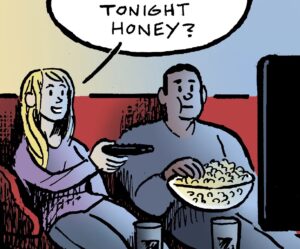What’s with all the copyrighted content on YouTube?
I don’t watch YouTube TV, but I use the original mobile app to rewatch old episodes of “Dr. Phil” and “Judge Judy.” I find plenty of piecemeal movie clips, too.
But, for the most part, this IP isn’t on YouTube because of licensing deals with broadcasters or entertainment studios. It’s uploaded by third-party accounts that often edit content to get around YouTube’s copyright detection tools, such as by adding music or making changes to audio and video frames.
Yet reposted content has ad breaks similar to those within user-generated content, which means it’s also generating ad revenue.
How is this allowed?
Exception to the rule
I looked up “YouTube’s copyright policy” using Google search, and Google itself suggested I complete my query with the words “is broken.” (The irony.)
The platform’s policy prohibits people from sharing content they don’t own without permission. There is, however, a legal exception to the rule referred to as fair use, which was established with an international treaty in the 1880s to protect freedom of speech by allowing the reuse of original work for the purpose of commentary and criticism. It’s kosher to repost news reporting for the sake of sharing a political view, for example.
This exception is why some YouTube accounts can legally upload content they don’t own, such as “Honest Trailers” and “Cinema Sins,” which critique movies.
“Copyright exceptions play a key role in supporting the free flow of ideas and creativity,” according to YouTube’s copyright policy.
But exceptions – or loopholes, as the case may be – don’t apply to videos of married couples screaming at each other on episodes of “Dr. Phil” reposted by accounts with usernames like “Pepperoni Pizza.”
AdExchanger Daily
Get our editors’ roundup delivered to your inbox every weekday.
Daily Roundup
Clean hands?
Clearly, it’s not hard to find plenty of reposted content on YouTube that doesn’t qualify for the fair use exception. The Digital Millennium Copyright Act (DMCA) exists to regulate those instances.
The DMCA requires online platforms to have a process for rightsholders to submit claims to remove copyrighted content.
“The way the DMCA works puts the burden on the rightsholders to take action,” Gary Kibel, a partner at the law firm Davis+Gilbert, told me earlier this week.
As long as YouTube is DMCA compliant – which it is – then it has a “safe harbor” from copyright infringement litigation.
The legal protection from liability is important, since lawsuits still happen when copyrighted content remains on YouTube despite requests to take it down, which could be the result of an incomplete or incorrectly filed DMCA claim.
Making a DMCA claim is no cakewalk. Rightsholders must identify a particular piece of copyrighted content and prove their ownership of it before a claim can be processed. Plus, not every claim is successful.
According to YouTube, it’s not up to the platform to decide who owns the rights to content. What YouTube can do is “give copyright holders the tools to make copyright claims and uploaders a way to dispute claims they believe are made incorrectly,” said Jack Malon, a policy communications spokesperson at YouTube.
YouTube has copyright detection tools in place to help rightsholders make such claims.
Content ID, for example, YouTube’s automated content identification system, allows rightsholders to upload a reference library of content, which Google can match with YouTube uploads to spot copyright infringements. But Google only approves the use of Content ID for accounts with a “substantial body of original material that’s frequently uploaded by the YouTube user community,” which currently totals about 9,000 accounts.
For smaller content creators that file a valid DMCA claim, YouTube allows them access to a different tool called Copyright Match to make sure the same content they successfully flagged isn’t reposted again. Roughly 2.5 million YouTube accounts have access to Copyright Match.
Overall, YouTube’s legal positioning when it comes to copyright emulates the oft-disputed Section 230, which largely protects social platforms from liability for user-generated content (at least for now).
Ads, baby
As long as YouTube is DMCA compliant, it gets to monetize the content on its platform with ads, whether or not that content is original. Reposted TV episodes I’ve seen have pre-roll and midroll ads from current political candidates and major national advertisers, such as Shopify, Hotels.com and Google itself, promoting products such as Google Cloud and the Google Pixel phone.
Speaking of ads, it turns out that YouTube’s Content ID tool is also a way to lessen the number of DMCA claims filed about content on its platform by giving rightsholders the option to monetize reposted content instead.
When a network or a larger rightsholder with access to the Content ID tool finds their copyrighted content on YouTube, they can choose to make ad revenue from the repost instead of filing a request to take it down.
In the second half of 2022, roughly 90% of content owners that found their content reposted on YouTube using Content ID chose to let the flagged videos remain on YouTube in exchange for monetization with ad revenue, according to YouTube’s most recent transparency report.
So, more likely than not, CBS, the network that distributes “Dr. Phil,” is well aware of accounts like “Pepperoni Pizza” that reupload episodes and is fine with it as long as it’s getting the ad revenue that those episodes generate on YouTube.
Apparently, not everyone cares if their content is reused somewhere else – they just want to be compensated for it.
Let me know what you think. Hit me up at alyssa@adexchanger.com.














